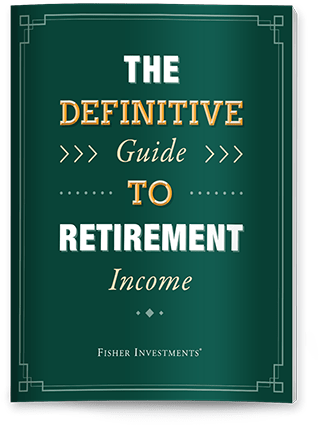Personal Wealth Management / Politics
The Trump Tariff Turnabout
Tariffs are already getting walked back.
Editors’ Note: MarketMinder prefers no party nor any politician. We are politically agnostic and assess developments for their economic and market effects only.
Two weeks into President Donald Trump’s second term, and the trade playbook already looks like a rerun of his first term: tariff threats, tariffs and … talks and deals.
Late last week, Trump announced he would follow through on campaign trail talk and issue an executive order on Saturday implementing blanket 25% tariffs on all Mexican and Canadian goods imports and an additional 10% tariff on Chinese goods. He followed through on Saturday, although the order cut tariff rates to 10% on Canadian energy products like oil or electricity. The tariffs were slated to take effect midnight Monday, and all three prepared retaliatory measures. A media firestorm ensued, to the extent Ottawa Senators fans booed the US national anthem Sunday.
Yet by Monday morning, there was a deal and delay with Mexico. A matching deal with Canada followed after market close. As we write, talks with China continue. Stocks fell modestly on the day but didn’t plunge. The S&P 500 pared early declines to finish down just -0.8%.[i] Canada’s S&P TSX 60 slipped just -1.2% in Canadian dollars.[ii] Are markets right to take all this in stride? We think so.
Taking any politician at their word—regardless of personality, policy or creed—is always perilous. But publicly, the Trump administration has portrayed these tariffs as foreign policy, not economic policy. He may occasionally mention trade deficits, but they aren’t the tariffs’ stated aim. It is to secure Canada, Mexico and China’s help with curbing the fentanyl trade and undocumented migration. The tariffs seem like leverage, Trump’s way of bringing Mexican President Claudia Sheinbaum, (outgoing) Canadian Prime Minister Justin Trudeau and Chinese President Xi Jinping to the negotiating table. And while Canada and Mexico had retaliatory tariffs ready to go, these were also negotiating ploys. The world is simply playing Trump’s game.
The deals with Mexico and Canada illustrate this. Sheinbaum didn’t win a delay by pledging to cap Mexican exports, reduce subsidies or raise labor costs. Rather, she pledged 10,000 Mexican National Guard Troops to border patrol and enforcement to tackle the drug trade. And—getting far less discussion—Trump pledged to address the flow of high-caliber weapons from the US to Mexico. Both can claim a win—Sheinbaum in her battle against the cartels, Trump in his efforts against trafficking. And both now have a month to hammer out the details and longer-term foreign policy agreements. Similarly, Trudeau won a 30-day delay after agreeing to deploy 10,000 troops to the northern border and work with the US to tackle fentanyl and organized crime. In both cases, no one made economic concessions. Actually, much of what Sheinbaum and Trudeau agreed to was already existing policy. This makes the whole scenario look like political theater.
China, too, is eager to sit at the negotiating table. Unlike past tariffs, this levy ensnares small packages worth less than $800, putting two large Chinese e-commerce platforms (Temu and Shein) in its crosshairs. Chinese officials have already scheduled talks, and everything is reportedly on the table, including fentanyl, TikTok and the reinstatement of China’s Phase One trade deal with the first Trump administration.
But for argument’s sake, what if all these talks and deals fall through and tariffs take effect and stay in place? Headlines warn it will mean higher inflation in the US and tougher times in Canada, Mexico and China. They claim markets haven’t adequately priced these risks and will have to adjust.
We think this is overstated. The first Trump administration’s tariffs on China, which the Biden administration preserved and added to, didn’t spike inflation or even import costs. While import prices did rise in 2018 and 2019, this was more about the global rise in oil prices. Consumer goods import prices barely budged, rising 0.4% in 2018 and falling -0.4% in 2019.[iii]
There are a few reasons for this. One, Chinese producers avoided tariffs by trans-shipping goods through Vietnam and other stopovers. Two, businesses adapted, either adjusting supply chains or negotiating with suppliers to share the tariff load. Three, businesses found workarounds, like adjusting the design of shoes to avoid having to pay tariffs on certain kinds of rubber.
Even if import costs had risen, it wouldn’t be inherently inflationary. Tariffs apply only to wholesale costs at the border, which are far lower than retail prices. US goods imports are about 11% of GDP.[iv] Canada, Mexico and China combine for about 42.9% of total imports.[v] It adds up to new taxes on a small piece of GDP, not nearly broad enough to affect prices of all goods and services. Plus—most importantly—tariffs can’t affect inflation unless the money supply spikes alongside them. In our view, only that would enable businesses to pass on all added costs indiscriminately. Absent it, tariffs inspire substitution, which reduces demand and keeps prices in check. Today, money supply is growing at a normal, pre-COVID pace.
As for the potential economic effect on America’s neighbors, this too seems overstated. Trade is important to Canada’s economy, but goods exports are 23.7% of GDP.[vi] The vast majority of this, 77.3% of total goods exports, does go to the US.[vii] But again, this trade isn’t going to vanish. The US wouldn’t just stop buying Canadian oil, roughly a quarter of US imports from Canada, for example. US refineries aren’t equipped to produce the light sweet crude that bubbles from America’s shale oil wells—they need Western Canada’s heavy crude. Maybe Western Canada Select oil prices fall a bit to adjust to the tariff. Maybe US refiners just swallow the tax. Maybe a little of both. But pipelines are highly, highly unlikely to run dry. The relationships between US and Canadian businesses are too strong not to find workarounds.
The same goes for Mexico—a beneficiary of the last round of Chinese tariffs, which prompted firms to “nearshore” production. And China, we have already seen that movie. The prior round of tariffs didn’t cause the long-feared hard landing to finally materialize. Trade re-routed. Life went on.
Lastly, always bear in mind that surprises move markets most. Whether you think they are good or bad policy, Trump’s tariffs are in line with what he proposed on the campaign trail and after the election. So are the accompanying foreign policy aims. Markets have known about these for months. Investors have assessed the probabilities and made the corresponding trading decisions. Yes, one could argue tariffs’ history of being negotiating ploys is also priced in, but that is a US-centric view. International investors are far less optimistic on the dealmaking front, and their skepticism counterbalances US optimism. Global forces hold sway, always.
If you would like to contact the editors responsible for this article, please message MarketMinder directly.
*The content contained in this article represents only the opinions and viewpoints of the Fisher Investments editorial staff.
Get a weekly roundup of our market insights
Sign up for our weekly e-mail newsletter.

See Our Investment Guides
The world of investing can seem like a giant maze. Fisher Investments has developed several informational and educational guides tackling a variety of investing topics.





